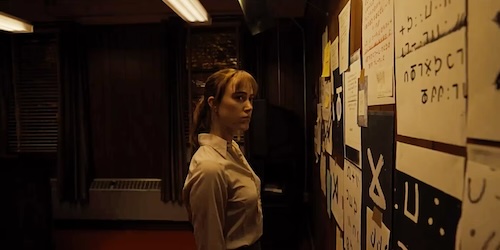
Did you catch up with Longlegs over the weekend? The skin-crawling new psychological horror forgoes jump scares in favour of an all-encompassing atmosphere of dread. Osgood Perkins' film is anchored by two wildly contrasting performances from Maika Monroe and Nicolas Cage, variously weather-beaten and satanically ghoulish, to deliver a creepy meditation on occult panic and the paranoia that lurks within staid American neighbourhoods.
No doubt the ending left you rattled and with plenty of questions. We've broken it down to present our own conclusions.
LONGLEGS SPOILERS AHEAD
At the end of Longlegs, FBI agent Lee Harker (Monroe) is horrified to discover that her mother Ruth (played by Alicia Witt) is the accomplice of the nefarious, elusive serial killer known as Longlegs (Cage). This demonic figure has plagued the local area for decades, leaving his taunting signature and occult symbols at the crime scene, but no other evidence that he participated in the crimes. Instead, he seems to coerce one of the victims into killing their families before the perpetrator ultimately kills themself.
As we see during the film's eerie prologue, Longlegs targeted Lee back in the 1970s when she was a young girl. However, Ruth managed to persuade Longlegs to spare the child's life. In exchange, he played on the devoutly religious woman's guilt, getting her to deliver his supernaturally imbued dolls to people's houses under the guise of Ruth doing God's work. With the dolls in place, the latent evil within them could be released to corrupt a particular family member, instigating a bloodbath without Longlegs being present. Ruth, meanwhile, can leave of her own volition.
Lee's doll remains in place and the girl survivor finds herself imbued with psychic powers, which she is at a loss to explain until the film's shocking endgame. Lee is, therefore, 'the daughter of the seventh she', the girl whose birthday, she deduces from Longlegs' cryptic ciphers, is missing from his triangular pattern of murders. (In occult circles, the seventh child of a seventh child is thought to have otherworldly powers, namely seeing into the future and healing the sick, which very much ties into the film's narrative.) Hence why the memories of the maniac have remained in her subconscious for so much time: she is the only one to have escaped him.
Longlegs eventually kills himself when under FBI interrogation, smashing his face into a table while a horrified Lee looks on, but not before uttering "Hail, Satan" and promising Lee that his death won't stop anything. He sees himself as a vessel and Lee's mother as the new perpetrator. However, Lee cracks the code while the horrific revelations keep coming: Longlegs is revealed to be 'the man downstairs' of her nightmares, and he was sheltered by Ruth in the basement of her childhood home.
Lee intercepts Ruth on her way to the next target, Lee's FBI superior Agent Carter (Blair Underwood whose droll line delivery occasionally helps offset the film's sense of menace). The death of Carter and his family will complete Longlegs' triangle, the occult symbol that has, until now, remained incomplete because Lee got away from him.
Lee is, however, too late to prevent her mother from arriving and delivering the newest doll to the Carters' home. After Carter murders his wife, Lee shoots and kills Carter to protect Ruby, his daughter. Ruth brandishes a dagger, and Lee is forced to shoot and kill her mother as well. Hesitating while going to destroy the doll, Lee tells Ruby they need to leave but remains frozen in place, staring at the doll, as the voice of Longlegs begins singing “Happy Birthday".
What are we to make of this disconcertingly open-ended conclusion? On a basic level, it suggests that the latent evil that has coursed throughout the movie will endure. Lee doesn't win: her mother dies, the doll is intact and her boss, plus his wife, is dead.
The film's time-hopping narrative, which leaps between the 1970s Nixon administration and the 1990s Clinton era (as signified by the pictures of the different Presidents throughout the film), is in and of itself a testament to evil's ability to endure throughout different generations and political landscapes.
One could perhaps see the corruption of the Nixon administration (the film starts in the 1970s, an era dominated by the Watergate affair) as an allegory for Longlegs' evil: it is out there, it explicitly exists and it will harm people. By the time we get to the 1990s, it perhaps gets more insidious with Longlegs' evil having gone to ground in an era of apparently more high-minded political aspirations. The darkness is still there, but it's cloaked in an atmosphere of familiarity and apparent openness.
Of course, that's just an interpretation. On a character-driven level, it leaves us questioning who Longlegs was, or what he was. Cage's maximalist style veers more toward pantomimic, fairy tale evil and doesn't seem to ground the Longlegs character in recognisable human impulses a la Anthony Hopkins in The Silence of the Lambs. Instead, Cage appears to play Longlegs as a vessel for something much larger and more terrifying.
The fact that we hear his voice at the very end of the film before it ironically and morbidly cuts into T-Rex's '(Bang a Gong) Get It On' over the end credits, suggests that he wasn't human at all but the devil incarnate in glam rock get-up. The film's literal-mindedness in its third act might have caught some people off-guard but Perkins is out to solidify devilish forces within an American suburban context. There's no ambiguity come the end of the film: black magic exists at large in the suburbs, as practiced by nominal human beings like Longlegs, and this is another key part of the film's context.
The so-called 'Satanic Panic' is credited as having kick-started in America in the 1980s, invoking much pearl-clutching and outrage at dark forces set to corrupt the American population. But in reality, the seeds of this lie much earlier in the period where Longlege begins. It's hardly a coincidence that the film begins in the 1970s, the decade in which The Exorcist exploded into cinemas in all its devilish, head-spinning glory.
Such pop culture milestones are often known to engender mass hysteria and given The Exorcist's barnstorming level of success, critical, commercial and artistic (it won two Oscars), it's hardly surprising that the film was capable of instigating occult panic on its own terms. Subsequent films like The Omen (1976) only helped reinforce the sense of arcane evil swirling around an era already riven by Presidential lies and wrongdoing.
One can even stretch things back to the 1960s, a decade that was despoiled and corrupted by the murderous actions of the psychopath Charles Manson and his 'family'. One need not look very hard to see Manson as an influence on the Longlegs character: Manson was ultimately tried for crimes of coercion, rather than direct action, and Longlegs exerts a similarly coercive force, summoning some demonic cult of personality to get others to do the deed.
Manson believed that The Beatles' 'Helter Skelter' portended a forthcoming, apocalyptic race riot, which speaks of his own faith in quasi-supernatural divination. One of his followers, Charles 'Tex' Watson, before killing the pregnant Sharon Tate and her friends, claimed, "I'm the devil, and I'm here to do the devil's business" (echoed to ironic effect in Quentin Tarantino's 2019 film Once Upon a Time in Hollywood).
Longlegs is, therefore, not just a great thriller, it's also a concise study of a country that appears to be in the throes of change, but which is still consumed by superstitions and paranoia that have existed since time immemorial. The battle between Lee and Longlegs could be seen as a metaphorical battle for the nation's soul. so who, do we assume, comes out the winner?
In the end, the film's discomfort comes from the fact that there are no winners. Longlegs may be physically dead but his dreadful soul appears to live on, and at the end of the film, his voice seems to stop Lee in her tracks. Lee, meanwhile, has ostensibly stopped his reign of terror but has been forced to confront horrible truths about her own family and kill her mother in the process. It's the essential yin and yang battle: good will continue to fight evil as the movie's abrupt final cut makes clear.
Perkins has since confirmed this, telling Variety: "The ending was meant to be tragic. The devil wins again on a small scale. One of the fun things about using the devil as your villain is that the devil never really goes for world domination. The devil always feels like, 'I’ll just f**k with this person, I’ll wreck this family, I’ll mess this kid up, I’ll torment this priest.'
"It’s never like, 'I’m going to eat the Vatican.' It never gets to that point for me with the devil. The devil is a little more amusing and playful than that. The story of Lee Harker ends with the ending of the movie. The last shot that she fires is the worst thing that can happen to her."
Or is the ending even more unsettling than it appears? Maybe Lee, superbly played in tight-lipped, contact-averse form by Monroe, stands to be corrupted by Longlegs' non-corporeal form and will become his new messenger as the 1990s proceeds. She has run all her life from this madman and having survived him once, maybe his master plan is to corrupt her from beyond the grave.
That there are no definitive answers is the essence of true horror. This is why Longlegs has been able to extend its feelers and buzz its way into an audience's subconscious. It's less about the physical sensations so predictably wrought by many horror movies, and more about those elusive, intangible corners that we will always be at a loss to explain.
Book your tickets for Osgood Perkins' new film The Monkey via the following link. It's released at Cineworld on February 21st.
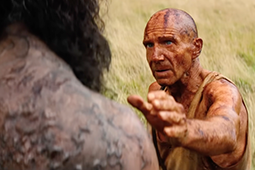



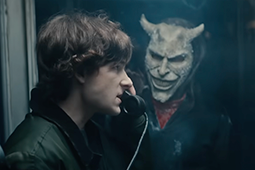

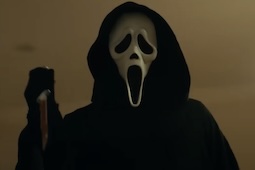

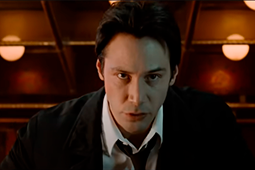
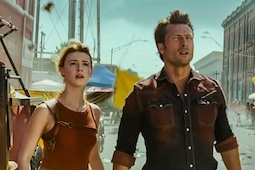


.jpg)
.png)






